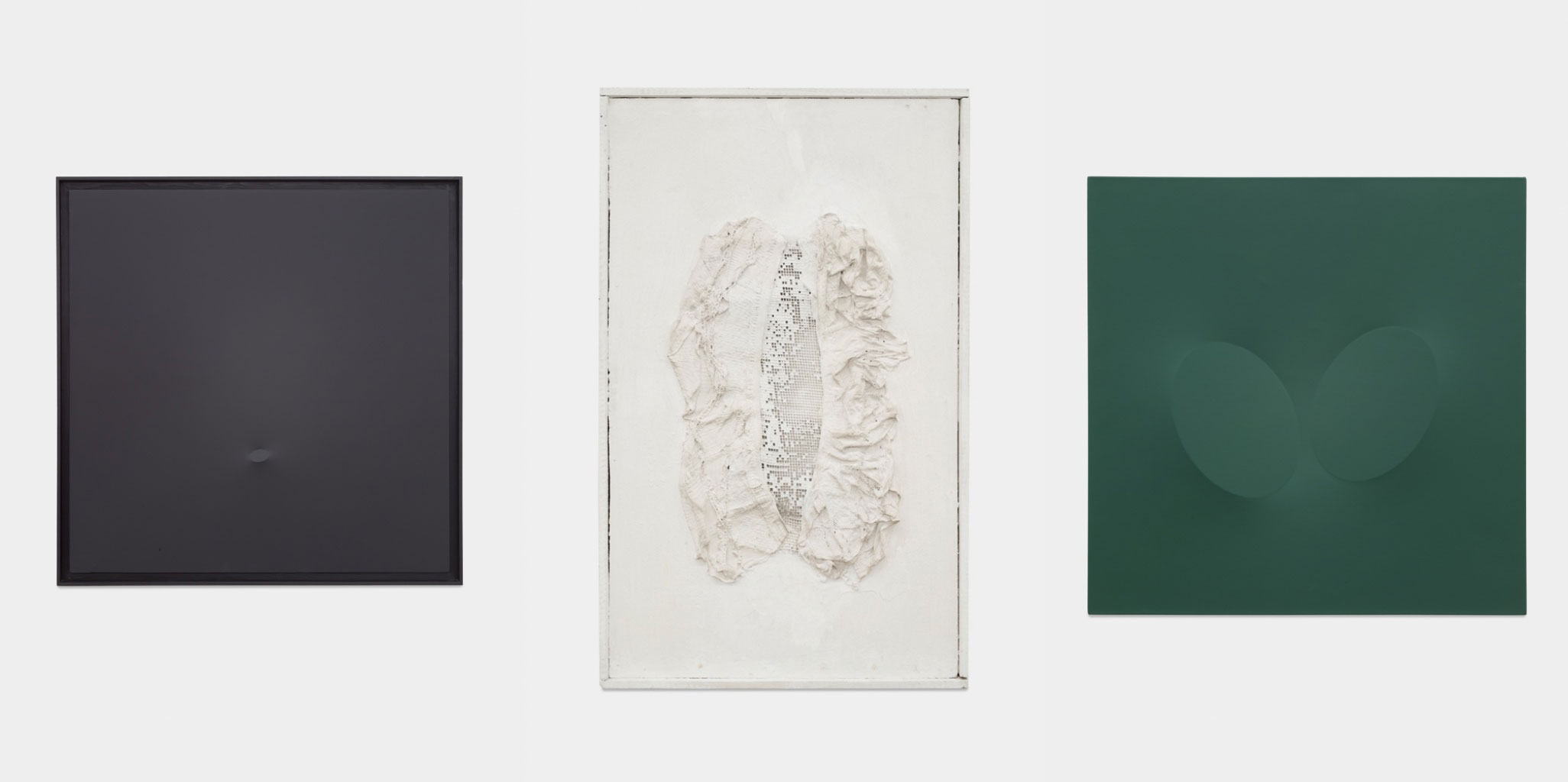ART CITIES: Paris-Turi Simeti
 The career of Turi Simeti spanned the history of Italian art in the second half of the twentieth century. After studying veterinary medicine in Bologna, then law in Palermo, Turi Simeti moved to Rome in 1958 where he attended the workshop of Alberto Burri. He began to paint and at the same time made long stays in London, Paris, and Basel where he absorbed the international climate of questioning of artistic bases and pictorial traditions. The language he develops, revolves around the concept of table-object, where the canvas is delivered from its notion of simple support.
The career of Turi Simeti spanned the history of Italian art in the second half of the twentieth century. After studying veterinary medicine in Bologna, then law in Palermo, Turi Simeti moved to Rome in 1958 where he attended the workshop of Alberto Burri. He began to paint and at the same time made long stays in London, Paris, and Basel where he absorbed the international climate of questioning of artistic bases and pictorial traditions. The language he develops, revolves around the concept of table-object, where the canvas is delivered from its notion of simple support.
By Efi Michalarou
Photo: Almine Rech Gallery Archive
The exhibition “Turi Simeti: Monochrome Adventure” is the first solo show of the artist’s work in France since his death in the spring of 2021. An homage to this Sicilian artist, who settled in Milan beginning in the mid-60s, it offers a journey through sixty years of his art, highlighting the constants and variations of his work in its formats, motifs, and colors, up to one of his very last paintings, “3 ovali blu” (2020). Marked by the presence of Lucio Fontana, the monochrome adventure in Milan in the 60s and 70s had Turi Simeti as one of its central figures, along with Agostino Bonalumi, Enrico Castellani, Dadamaino, and Paolo Scheggi. Their aim was to reduce painting to its most elemental parts: color and form. For Simeti, this form would be the oval, the ultimate essential shape, which he first stuck to the canvas in “72 ovali neri” (1962) and then placed underneath it in “Polittico nero” (1979)to create a three-dimensional painting, playing with forms in positive and negative space, and even writing the word “oval” on one of his early drawings.This use of shape in painting, which was a way of leaving behind the traditional flatness of the canvas, was a common concern in the early 60s, shared also in a figurative perspective by Pino Pascali and Cesare Tacchi in Rome, the city where Turi Simeti began his artistic career. The artist would explain his choice to create shape in painting in this way: “The three-dimensional area of the painting created from the inside toward the outside and vice-versa offers shifts of light with infinite possibilities and variations. In this way, light completes the artwork and at the same time transforms it, giving it harmony and color.” The motif of the oval or ellipse thus creates tension between perceptual variations of the canvas. In this way, Simeti’s work paralleled the abstract themes of avant-garde groups of the period in various countries: in Italy with Nuova Tendenza, in Germany with ZERO or in Holland with Nul. He showed his work with these groups on several occasions which contributed to his reputation outside Italy. His international connections were solidified when he moved to New York in 1967 and stayed for some time, making contacts with the American art scene. Close to Milanese artists such as Vincenzo Agnetti, Enrico Castellani, Gianni Colombo, and Grazia Varisco, Simeti maintained this minimalist commitment to a form that can be perceived under the surface of the canvas like a fundamental sign pursuing its artistic radicalness. He never departed from the aesthetic direction he chose. The only variations over the years would be the size of the ovals, their number, and their rhythm, as Simeti continued his ongoing exploration of the perpetually changing effects of light on the surface of the canvas. In 1979, years after the 1968 earthquake that destroyed the small town of Gibellina in Sicily, not far from Alcamo, Turi Simeti’s hometown, the artist, along with many other Italian figures (including Carla Accardi, Pietro Consagra, Fausto Melotti, Alessandro Mendini, and Nanda Vigo) was commissioned to create a work to be placed in the new Gibellina, built just a few kilometers from the former town, which is today covered by “Il Grande Cretto” (1984-2015) by Alberto Burri. Simeti, who had already experimented with sculptural space by adding dimensionality to the canvas (and sometimes displaying his work on the ground), created “Scultura per Gibellina” in white marble. This discreet, human-sized work is located off of a public square and symbolizes the idea of the rebirth of the town with the oval shape that can be perceived in its center. This exhibition of Turi Simeti’s work allows us to reconsider its place in the monochrome adventure that took place in the second half of the twentieth century in Italy and around the world, inviting us to a spatial and meditative experience of painting.
Photo: Turi Simeti, 24 ovali rossi, 1967, Acrylic on shaped canvas, 100 x 120 cm, © Courtesy of the Archivio Turi Simeti and Almine Rech
Info: Almine Rech Gallery, 18 avenue de Matignon, Paris, France, Duration: 6/1-12/2/2022, Days & Hours: Tue-Sat 11:00-19:00, www.alminerech.com

Right: Turi Simeti, Sei ovali rossi, 2014, Acrylic on shaped canvas, 180 x 120 cm, © Courtesy of the Archivio Turi Simeti and Almine Rech





Right: Turi Simeti, Dodici ovali Bianchi, 2015, Acrylic on shaped canvas, 200 x 100 cm, © Courtesy of the Archivio Turi Simeti and Almine Rech


Center: Turi Simeti, Collage con rete metallica, 1960, Collage on canvas, 75 x 45,5 cm, © Courtesy of the Archivio Turi Simeti and Almine Rech
Right: Turi Simeti, Due ovali neri, 2010, Acrylic on waxed shaped canvas, 33 x 22 cm, © Courtesy of the Archivio Turi Simeti and Almine Rech
